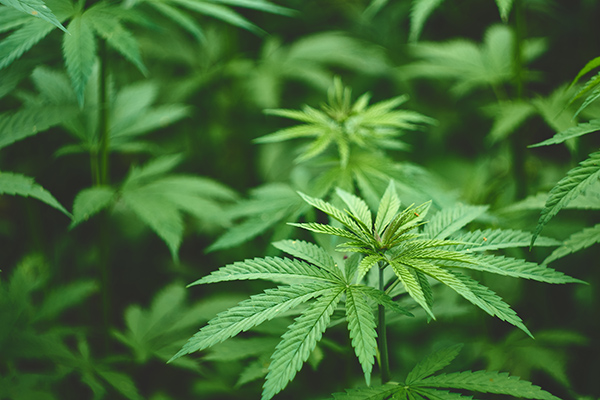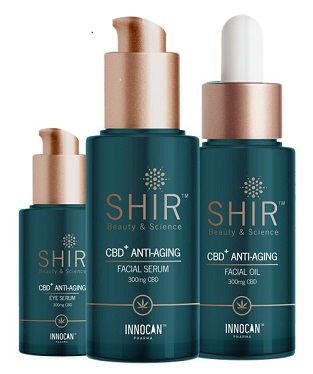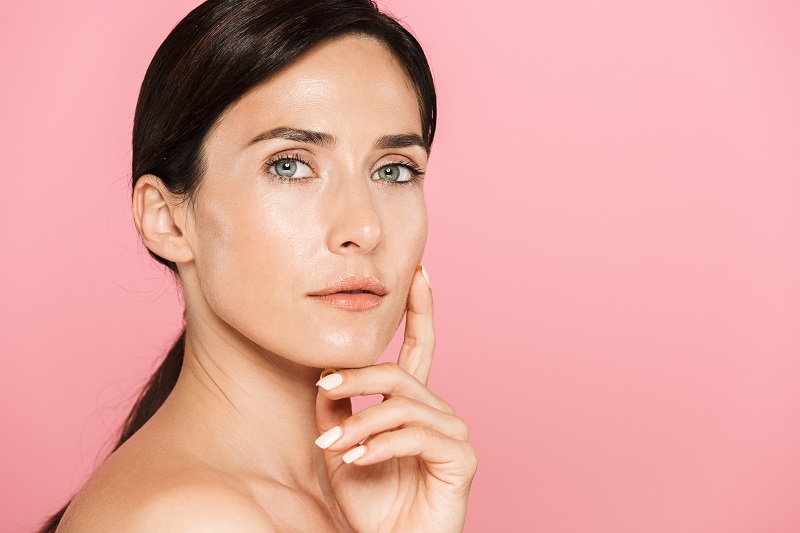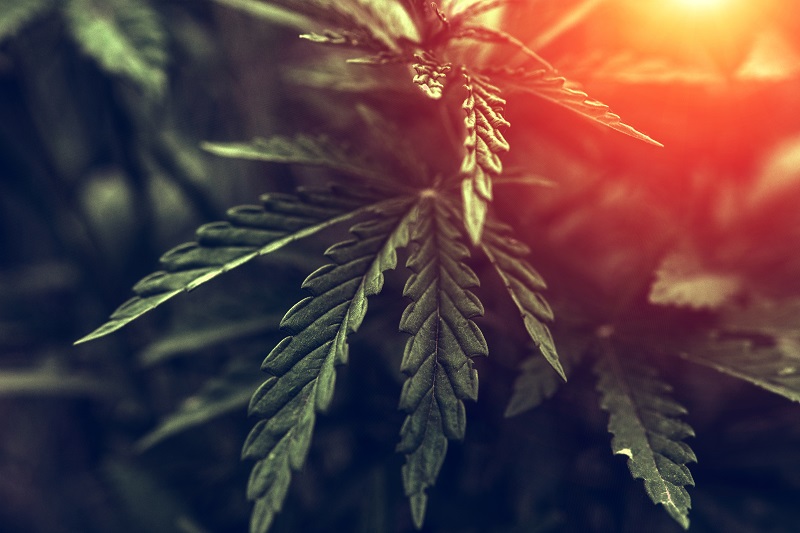What is CBD?

Introduction
In the last decade, CBD has gone from being a fringe medicine to being literally everywhere. Today it can be found in edibles, tinctures, oils, CBD Skin care products and beverages. The CBD industry in the USA alone is projected to reach $16 billion by 2025. But why the sudden interest? What is it that created so much interest in CBD? This introductory article will help consumers understand what CBD is and why it has gained so much attention in the last few years. In addition it will help to explain some of the terms used in relation to CBD. In this article the term CBD refers not only to the specific cannabinoid but also to the various forms of extracted cannabinoids.
CBD – What is it?
CBD, short for Cannabidiol, was discovered in 1940 and is one of more than 100 identified phytocannabinoids (cannabinoids for short) found in the Cannabis sativa plant. There are basically two classifications of Cannabis sativa. For the purposes of this article we will refer to one as Hemp and the other as Marijuana. The primary difference between these two plants, other than appearance is that the Marijuana plant contains significantly higher levels of THC (tetrahydrocannabinol) the psychoactive cannabinoid that gets you high. Some strains of marijuana have tested at more than 30% THC while Hemp typically contains less than 1%. US law states Hemp must contain no more than 0.3% THC.
The CBD molecule (cannabidiol) on its own is identical, whether it is extracted from Hemp or Marijuana. When purchasing CBD products, the most common terms you will see on the packaging are CBD isolate,full-spectrum CBD and broad spectrum CBD. It’s importantthat consumers understand the difference between them in order to make the purchase that best meets their needs. However, for the purposes of this article, we will focus on CBD isolate. (1)
CBD Isolate
CBD isolate is 99% pure with no other cannabinoids present. On its own at room temperature it appears as a white crystalline powder. To form a CBD isolate, the CBD must be extracted and isolated from all other cannabinoids. After the initial extraction, the process goes even further by removing the other cannabinoids and parts of the plant, so that only pure CBD remains.
CBD isolate is the purest form of CBD. It can be found in CBD products where its interaction with other cannabinoids is not required. Its unique abilities in how it interacts with the Endocannabinoid System make it a perfect ingredient in CBD beauty products such as CBD Beauty Serum. Individuals wanting to avail the benefits of CBD but avoid TCH can choose products made with CBD isolate. (2)
The Endocannabinoid System
Marijuana has been used as a medicine for thousands of years. The first written record can be traced back to ancient China around 5000 years ago, where extracts of the plant were used for relief of cramps and pain. (3) The healers using it may not have understood why the plant had its medicinal properties, but theywould mix the plant into their medicines to treat a wide variety of ailments. The discovery of the endocannabinoid system in the early 1990’s by researchers studying the effects of THC opened the door to numerous studies on how cannabinoids interacted with it. CBD is one of the most widely studied cannabinoids. Most of the articles you will read on this site will focus on CBD and the many possibilities it brings to pharmacology and medicine.
The Endocannabinoid System(ECS) is a complex cell-signaling system in your body. In school we all learned about the various systems in our body such as the Skeletal System, Digestive System, Circulatory System, Nervous System etc. The ECS is the latest system to be discovered and it exists and functions in your body regardless of whether you use marijuana or not.
It has been determined that its primary function is to maintain homeostasis in virtually every part of the human body. We will come back to this later.
Professor Raphael Mechoulam, a leading Israeli organic chemist and professor of Medicinal Chemistry at the Hebrew University of Jerusalem in Israel has made significant contributions through his research in the chemistry and pharmacology of cannabinoids. He and his research group succeeded in the total synthesis of the major plant cannabinoids Δ9-tetrahydrocannabinol, cannabidiol, cannabigerol and various others. Another research project initiated by him led to the isolation of the first described endocannabinoid, anandamide which was isolated and characterized by two of his postdoctoral researchers, LumírOndřejHanuš and William Devane. Another endocannabinoid, 2-AG, was soon discovered by Shimon Ben-Shabat, one of his PhD students. (4)
How Does the ECS Work?
The ECS consists of three major components: endocannabinoids, receptors, and enzymes.
Endocannabinoids
Endocannabinoids, also known as endogenous cannabinoids, are molecules naturally occurring in your body. They’re similar to the cannabinoids found in Hemp and Marijuana, but they’re produced by your body. Essentially they function as the “messengers” of the ECS by delivering information on the condition and function of the body when a problem occurs.
Two key endocannabinoids identified so far:
- anandamide (AEA)
- arachidonoylglyerol (2-AG)
These help keep internal functions running smoothly. Your body produces them as needed, so it is unclear what are the normal levels required. (5)
Endocannabinoid receptors
These receptors are located throughout your body. When a problem is detected, the endocannabinoids will bind to the receptors signaling the ECS to take action. The action taken by the ECS will depend on what the specific problem is
There are two main endocannabinoid receptors:
- CB1 receptors, primarily found in the central nervous system
- CB2 receptors, primarily found in the peripheral nervous system, especially immune cells
Endocannabinoids can bind to either receptor. The effects that result depend on where the receptor is located and which endocannabinoid it binds with. (5)
Enzymes
Enzymes break down the endocannabinoids once they’ve carried out their function.
There are two main enzymes responsible for this:
- fatty acid amide hydrolase, which breaks down AEA
- monoacylglycerol acid lipase, which typically breaks down 2-AG (5)
What Do We Know So Far?
Experts are still trying to understand the ECS and considerable research is being conducted to fully understand the scope and function of the system. It is believed that its primary function is to maintain homeostasis within your body. In other words, if there is a problem in any part of your body, the ECS will kick in to try and repair it.
For example, if you stub your toe you may experience intense pain for a few seconds and then it subsides. This is because the ECS has been activated and sent endocannabinoids to bind with CB1 receptors in a spinal nerve to relieve the pain. In another instance your body may be experiencing inflammation due to an autoimmune disorder such as rheumatoid arthritis, inflammatory bowel disease or psoriasis. The ECS will signal endocannabinoids to bind with CB2 receptors signaling immune cells to fight the inflammation.
Functions of the ECS
As noted earlier, experts haven’t determined exactly how the ECS works or what all of its potential functions are. It’s a complicated system, but research suggests it could be one of the most important discoveries towards treating a wide range of ailments.
Research has linked the ECS to the following processes:
| · appetite and digestion
· metabolism · chronic pain · inflammation and other immune system responses · mood · learning and memory · motor control |
· sleep
· cardiovascular system function · muscle formation · bone remodeling and growth · liver function · reproductive system function · stress · skin and nerve function |
All of these functions contribute to the homeostasis of one’s internal environment. When a problem is detected in any of these functions, the ECS will be activated to modify and regulate the function. (5)
The Emerging Role of CBD and the ECS
THC and CBD are the main cannabinoids found in Hemp and Marijuana. They are the most widely studied of the more than 100 known cannabinoids and are similar to endocannabinoids created in our own bodies. Researchers discovered that THC and CBD react with the ECS in similar ways as the endocannabinoids produced within our own bodies. In addition, because they are natural compounds they are readily accepted by the body.
THC interacts with the ECS by binding to receptors, just like the endocannabinoids our body produces naturally.The result is a range of effects on your body and mind, some more desirable than others. For example, THC may help to reduce pain and stimulate your appetite, but it can also cause paranoia and anxiety.Regardless, it is a powerful cannabinoid because it can bind with both CB1 and CB2 receptors.
CBD reacts with the ECS in a wide variety of ways. Depending on the need at the time, it is believed that CBD can promote or inhibit neurotransmitters from binding with their receptors or slow down the process of the enzymes AEA and 2-AG from breaking down the endocannabinoids at work in the system. It has also been shown to inhibit the response of immune cells. (6)
Current Uses in Medicine
Currently only a handful of prescription medications that use CBD and/or THC are available to consumers. Two well know examples are:
Epidiolex,a plant-based tincture formulation of CBD used to treat epilepsy. Oddly enough, the official website hosted by the manufacturer admits it is unclear why it works. However, it has been approved for use in the US and other countries. (7)
Sativex is a THC/CBD oral spray that treats neuropathic pain and spasticity in patients with Multiple Sclerosis (MS). Also analgesic treatment in adult patients with advanced cancer who experience moderate to severe pain. (8)
Non-medicinal Uses
As mentioned earlier, CBD consumer packaged goods are widely available where it is legal. People are ingesting CBD through oils, tinctures, gummies, beverages, chocolate, you name it. Topical creams to relieve muscle pain or treat skin conditions such as Psoriasis are available. CBD skin care products such as Anti aging CBD Facial cream, CBD Beauty serum and CBD Body oils infused with CBD and Hemp oil assist in improving the appearance of face and body and contribute to reducing the appearance of aging.
The positive results being reported by consumers are testimony to their effectiveness.The people have spoken and they want these products, whether they are prescribed by their physician or not.
Buyer Beware
You can buy oil infused with isolate, or you can buy the “raw” CBD crystals or powder. Now that the CBD industry is growing, you can also get many other CBD products like CBD edibles, capsules, and topicals.
But despite its dominance in the world of wellness, many people are still confused in terms of dosage, how to take it and even if what they are taking is legitimately CBD.
A study published on November 7, 2017 titled “Labeling Accuracy of Cannabidiol Extracts Sold Online” found that less than 1/3 of the 84 products purchased and tested only 30.95% of the products were accurately labeled. The other products tested were either higher or lower than the amounts listed on the labels. In the last year, the American Association of Poison Control Centers reports that more than 1,000 people have contacted poison control centers about CBD. Over a third are estimated to have received medical attention, and 46 were admitted into a critical care unit. It is believed these people were possibly exposed to other products, or had drug interactions. (9)
Tainted CBD
Knowing where and how your CBD is sourced will have a major effect on contamination levels. Hemp is a phytoremedial plant that removes pollutants such as heavy metals and chemicals from soil. But a lack of stringent local regulations surrounding the production and refinement of hemp in some areas could lead to highly contaminated CBD products.
Third Party Testing
In order to remove the risk of ingesting CBD with unknown additives or contaminated CBD, it is safer to consume hemp-derived CBD products which are grown without chemical pesticides and which have been third-party tested.
Conclusion
The takeaway of all this is that we are just rediscovering what healers knew thousands of years ago. And like the healers of ancient times, present day experts do not fully understand why CBD works. What they do know is it interacts with the Endocannabinoid system which is vital in in keeping your internal processes stable. As this area of study advances, and experts develop a better understanding of CBD and the ECS, it could eventually hold the key to treating a wide range of medical conditions.
References for This Article
(1) https://www.health.com/condition/pain/what-is-cbd
(2) https://www.fullspectrum.com/cbd-isolate-vs-full-spectrum/
(3) https://www.ncbi.nlm.nih.gov/pmc/articles/PMC5877694/
(4) https://en.wikipedia.org/wiki/Raphael_Mechoulam
(5) https://www.healthline.com/health/endocannabinoid-system-2
(6) https://www.ncbi.nlm.nih.gov/pmc/articles/PMC4151231/
(7) https://www.epidiolex.com/
(8) https://medicalmarijuana.procon.org/pharmaceutical-drugs-based-on-cannabis/
(9) https://www.ncbi.nlm.nih.gov/pmc/articles/PMC5818782/
More articles:










